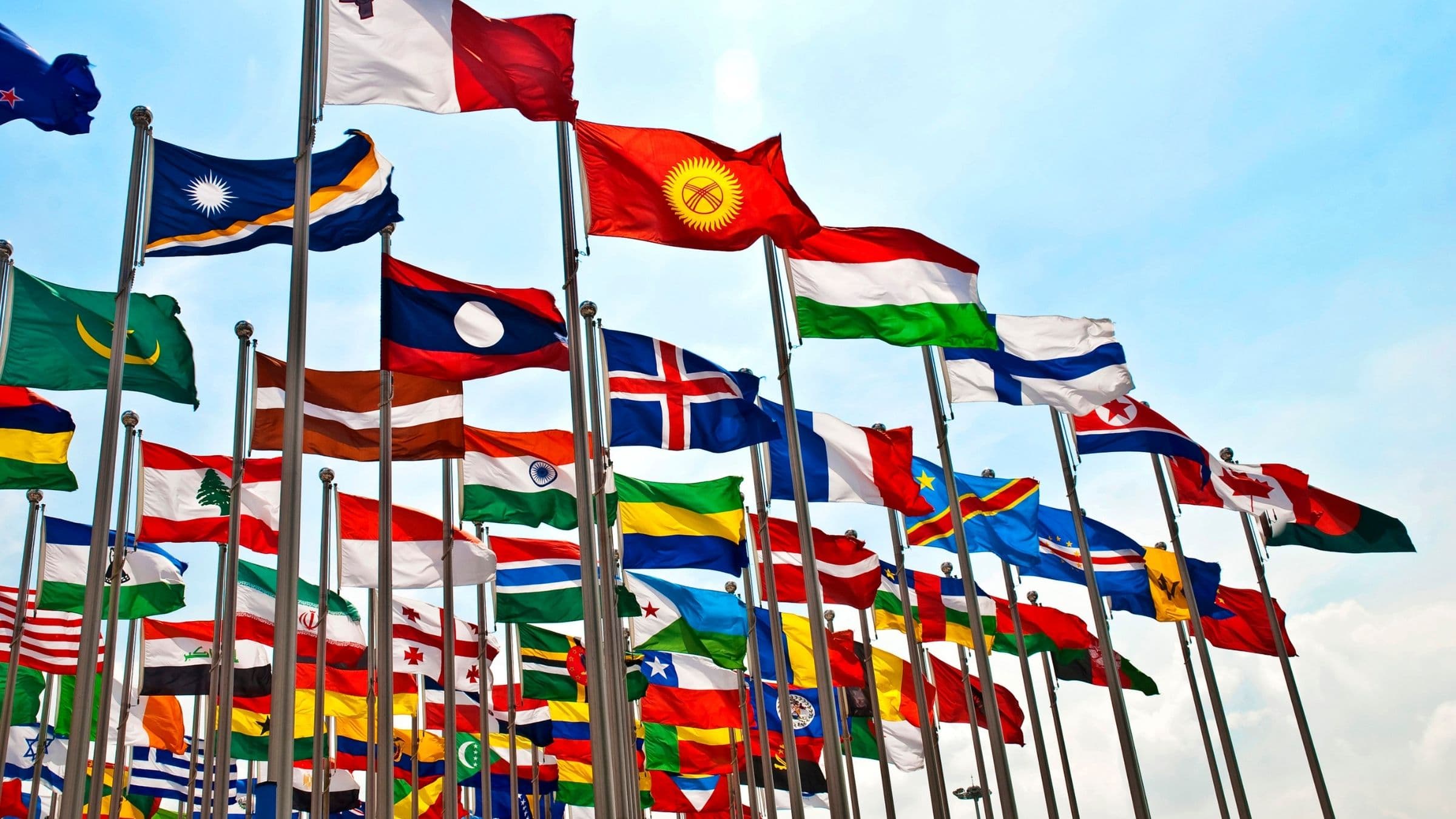
COUNTRY PROFILE
Discover more about the Colombia market including overviews about the retail, foodservice, and food-processing sectors. Events, resources, and more are linked throughout the profile.

$449.4 Million
total U.S. exports of processed foods to Colombia

2nd
largest market in South America for U.S. processed food product exports
Focus Economics reports that the Colombian government of Gustavo Petro has attempted to increase the government’s role in the provision of public services and reduce the country’s dependence on hydrocarbons, though with limited success due to parliamentary pushback. Ensuing political uncertainty over the government’s reform agenda has spurred volatility in the peso.
Colombia faces myriad risks, including extreme climatic events, elevated economic inequality spurring social unrest—such as that which occurred in 2021—swings in hydrocarbon prices impacting fiscal revenues, a resurgence in emigration from Venezuela and a rise in violent crime. Colombia has significant potential for growth, thanks to a large and growing consumer market and abundant natural resources. Gross Domestic Product (GDP) growth should outpace the Latin America average over the forecast horizon. That said, activity will likely continue to be held back by a weak education system, poor infrastructure, and persistent insecurity in some areas of the country.
Colombia’s population was 49.3 million in 2023, (CIA World Factbook Est.) up from 39.2 million in 2000. The total population will reach 53.1 million by 2030. The share of those of 0-14 years was 40.6% of the total in 1980 but had fallen to 22.4% by 2023 (still high by regional standards). The share of those over 65 years represented 10.9% of total population in 2023 and it will rise to 12.8% by 2030.
USDA’s Office of Agricultural Affairs (OAA) in Bogota, hereinafter referred to as FAS Post Bogota, reports that the U.S. Colombian Trade Promotion Agreement (CTPA) entered into force in May 2012. This comprehensive trade agreement eliminated tariffs and other barriers to goods and services. Although over 80% of U.S. exports of consumer and industrial products to Colombia have become duty-free, the CTPA provided a duty-free tariff-rate-quota (TRQ) on certain goods that operate under a first come/first serve basis, except for rice and poultry, which are subject to auctions managed by Export Trading Companies (ETC).
Colombia is eager for access to other markets and has signed Free Trade Agreements (FTAs) with various countries and trade blocs, such as Canada, the South American Common Market (MERCOSUR), the European Union, Israel, Panama, South Korea, Costa Rica and a larger trade bloc, the Pacific Alliance, which includes Mexico, Peru and Chile. Colombia has 17 FTAs with different countries or different groups of countries.
FAS Post Bogota reports that Colombian middle-class expansion, retail modernization, and healthy product preference as the main drivers of demand. Consumer habits and preferences continue to evolve, opening opportunities for healthy and sustainable food products. Food price inflation reached 27% in November 2022, on a yearly basis, the highest recorded inflation in nearly two decades. As such, consumers are very sensitive to price, presenting challenges for the rebound of the foodservice sector.
Colombia is now the second largest importer of processed food in South America, US$564.3 million in 2022, and an increase of 1%. In 2023 data shows that U.S. processed food exports to Colombia have decreased considerably, down 20% to US$449.4 million. This equates to US$142 million, which adds to the U.S. trade deficit in food and agricultural products.
Top processed food exports to Colombia in 2023 included:

$13.7 Billion
estimated total retail sales in the packaged food market in 2023

69.8%
growth rate of retail sales in the packaged food market since 2019

5th
largest market for packaged food in the region
Euromonitor has reported that retail sales value of the packaged food market in Colombia reached nearly US$13.7 billion in 2023. That ranks Colombia as the fifth largest packaged food market in Latin America. The 2023 figure also represents an increase of 69.8% from the 2019 value, or US$5.6 billion. They also forecast the value of retail sales in packaged food to increase to US$18.4 billion by 2028, an increase of nearly 24% or US$3.5 billion from 2024. High growth products in the forecast include:
FAS Post Bogota reports that although the Colombian retail sector continued its positive performance in 2022 due to growing household consumption, the sector’s future growth is uncertain due to increasing inflation and interest rates. It is expected that Colombian consumer expenditures will decline, affecting economic performance. In 2022, Colombia’s retail sector performed positively supported by strong household consumption.
Looking ahead, higher prices will lower consumer purchase power and limit the sector’s growth. Hard-discounters continue to do well, offering good-quality products at reasonable prices, and convenient locations close to buyers. E-commerce also continues to grow, thanks to Colombians’ rapid digital adoption, forcing retailers to develop online sales channels, and strengthening applications (apps) already present in the market, such as Rappi and Merqueo.
Colombian Retail Structure: Cash and Carry: Makro, PriceSmart, and Surtimayorista are the main players. Only PriceSmart operates using the membership model, and it is perceived as a place where consumers can find a wide variety of imported products, mostly from the U.S.
Supermarkets: Olimpica, Carulla, and Colsubsidio lead the segment. Strengthening private label product portfolio and developing an e-commerce strategy were their priorities. Independent supermarkets are also popular. These family-owned businesses developed their own private label products and expanded their presence in the country. Two of the brands were Zapatoca and Euro. Supermarket sales grew 6% in 2022.
Hypermarkets: Exito, Alkosto, Jumbo, Supertiendas Olimpica, and Metro are the leaders in this category. Discounters challenged this segment, which had to adapt to consumers’ needs, especially to use space more efficiently. Sales grew 5% in 2022.
Discounters: the main players are D1 and ARA. Isimo, a new brand, is owned by Olimpica. It has 258 outlets and expects to expand to 420 outlets during the first year of operations. Their proximity to consumers, appealing private label portfolio, and competitive prices has been the drivers for their performance. Sales increased 15% in 2022.
Convenience stores: OXXO, Exito Express, and Metro Express are the key players of this segment, mostly located close to universities and business clusters. Gas station stores like Primax, Altoque, and On the Run are part of this segment. They widened their portfolio to target households and mitigate decrease in sales due to virtuality. They specialize in on-the-go products and prepared snacks. Euromonitor reported a 15% increase in sales in 2022.
FAS Post Bogota reports that U.S. high value-added products with high potential in the Colombian food market include dog and cat food; distilled spirits; beef and beef products; fresh and processed vegetables, dairy products, pork and pork products, dairy products, poultry meat and products, and food preparations.

24%
growth in the foodservice sector
FAS Post Bogota reports that in 2022, Colombian GDP for lodging and restaurants grew 16% compared to 2021 and 20% compared to 2019, consolidating its share of Colombia’s economic activity at 4.5%. Although the hotel restaurant and institutional (HRI) sector reported strong sales in 2022, more substantial growth is limited by high food inflation and pressures on food prices. In 2022, foodservice sales grew by 24% in Colombia.
Based on Euromonitor’s information, the HRI sector consists of 113,000 restaurants, cafes, bars, cafeterias, and kiosks, and 10,000 hotels. The Colombian National Department of Administrative Statistics (DANE) estimates that the HRI sector is highly informal and therefore, strong competition from local informal restaurants and hotels remains. Although urbanization, a growing number of shopping malls and food courts, increasing dual income households, higher participation of women in the labor force, and a growing flow of tourists are major drivers of HRI expansion, most Colombians still link the experience of dining out with celebrations. Foodservice sales increased by 24% in 2022, but the sector experienced a slower pace of growth pace due to higher inflation and fluctuations in the exchange rate.
Restaurant chains are well established and recognized by consumers. They have benefited from their standardized menus and formats, providing confidence to consumers who know what to expect. Independent brands offer a wide variety of options and innovative menus, including non-traditional ingredients and flavors from other cultures. For independent brands, Colombians are willing to pay more. Small informal restaurants, which are often preferred by workers and students, are found all over the country.
According to the Colombian Association of Restaurants (ACODRES), the market share of the 113,000 restaurants independent outlets is now close to 95%. Some American restaurant and fast-food chains present in the market are Burger King, Dunkin’ Donuts, Hard Rock Cafe, Hooters, McDonald’s, Subway, KFC, Domino’s, Papa John’s, and Starbucks. Main local restaurant chains are Frisby, El Corral, Crepes & Waffles, and Archie’s.
The country’s hotel supply is wide and diverse, and includes hotels that are chains, boutique, independent, and marketed as ecofriendly. The main travel motivations for Colombians are leisure (58%) and business (35%). In 2022, foreign visitors were mainly from the U.S. (28%), Mexico (9%), Ecuador (7%), Venezuela (6%), and Peru (5%).
Colombia’s HRI industry has been seriously impacted by food inflation. Consumers are very sensitive to price changes. Therefore, small restaurants have adapted their menus and portion sizes to mitigate inflation effects. Due to COVID-19 impacts on the sector, the government of Colombia suspended consumption taxes for restaurants, which came back into effect in 2023, increasing prices and affecting reactivation. ACODRES reported that restaurant sales went down 24% from January to June 2023, compared to the same period in 2022.
Colombia is a fast-growing market for value-added food products. Industry surveyed retailers and food importers feel there is significant potential for new products in all food categories and among them pork meat and products, processed turkey and duck, bone-in beef cuts, processed fruits and vegetables, wine & beer, tree nuts, and dairy products.
FAS Post Bogota reports that Colombia is a net importer of many food ingredients, and a growing domestic demand for healthier snacks is creating opportunities for U.S. imports. The Colombian fats and oils sector imports unrefined soybean oil and other oilseeds to meet industrial demand. The milling, bakery, and starches sectors have benefited from innovation in flavors and healthier ingredients.
The Colombian food and beverage industry production represents 27% of the country’s total manufacturing by value. According to DANE, the food industry grew 7% in 2022. The following sectors showed remarkable growth performance in 2021: cocoa, chocolate, and confectionary (16%), beverages and tobacco (12%), fruit, vegetable, pulses, and tuber products (11%), and mill products, starches, and bakery (10%). The beverages and tobacco and mill and bakery sectors represent the largest share in Colombian food industry production. Food expenditures represented 39% of Colombian household incomes in 2022. Meat, dairy, and bakery products were the most consumed (a third of the total).
In recent years, the Colombian food industry has undergone unprecedented consolidation and structural change through mergers, acquisitions, divestitures, and the entrance of new foreign competitors in the market. Distribution channels have become more efficient with the increased presence of foreign competitors.
Colombia is the largest U.S. export market in South America for intermediate products which is where most food ingredients are aggregated. In 2023 U.S. exports of intermediate products reached US$1.3 billion, growth of 14% and almost equal to the 2022 total. That figure is also over 38% of the regions total, as well as coincidentally 38% of the Colombian agricultural total.
Top U.S. exports of intermediate products to Colombia in 2023 included soybean oil and meal, distillers’ grains, dextrins, peptones and protein isolates, essential oils, food flavorings, sugar, sweetener and beverage bases, vegetable oils, milled grains, and animal fats.